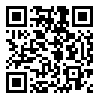Volume 5, Issue 3 (Vol 5, No 3 (17) 2024)
2024, 5(3): 93-103 |
Back to browse issues page
Download citation:
BibTeX | RIS | EndNote | Medlars | ProCite | Reference Manager | RefWorks
Send citation to:



BibTeX | RIS | EndNote | Medlars | ProCite | Reference Manager | RefWorks
Send citation to:
Mirzazadeh K, Iskandar Nejad G, Shahriari Ahmadi M. (2024). The Effectiveness of Two Storytelling Methods through Imagery and Pantomime on Emotional and Behavioral Disorders of Hearing-Impaired Students. Journal of Childhood Health and Education. 5(3), 93-103. doi:10.32592/jeche.5.3.93
URL: http://jeche.ir/article-1-275-en.html
URL: http://jeche.ir/article-1-275-en.html
1- Assistant Professor, Department of Psychology, Islamic Azad University, Central Tehran Branch, Tehran, Iran
2- Assistant Professor, Department of Art, Tehran University of Cinema and Theater, Tehran, Iran
3- PhD student in psychology of exceptional children, Department of Psychology, Islamic Azad University, Central Tehran Branch, Tehran, Iran
2- Assistant Professor, Department of Art, Tehran University of Cinema and Theater, Tehran, Iran
3- PhD student in psychology of exceptional children, Department of Psychology, Islamic Azad University, Central Tehran Branch, Tehran, Iran
Abstract: (1151 Views)
Background and Aim: The present study was conducted with the aim of comparing the effectiveness of two storytelling methods through visualization and pantomime on the emotional and behavioral disorders of students with hearing problems. ResearchMethods: The statistical population of the present study includes all deaf female students aged 14-17 years old in the 20th district of Tehran who were studying in 2001-1401 in a purposeful and available sample size of 24 people and randomly divided into three groups. (8 people in the group under storytelling training through visualization, 8 people in the group under storytelling training with pantomime and 8 people in the control group) were replaced. In order to collect the research, Achenbach's emotional-behavioral child inventory (1999) was used. The obtained results were analyzed using SPSS22 software and multivariate analysis of covariance statistical test. Results: Data analysis showed that storytelling through pantomime is effective in reducing law-breaking behaviors and storytelling through visualization and pantomime is equally effective in reducing aggressive behaviors. Conclusion: According to the results of the research, it is recommended to implement the storytelling method through illustration and pantomime to reduce law-breaking and aggressive behaviors in students with hearing problems.
Keywords: Students with hearing problems, Storytelling through imagery, Storytelling through pantomime, Emotional/behavioral disorders
Type of Study: Research |
Subject:
Special
Received: 2024/09/24 | Accepted: 2024/05/30 | Published: 2024/05/30
Received: 2024/09/24 | Accepted: 2024/05/30 | Published: 2024/05/30
| Rights and permissions | |
 |
This work is licensed under a Creative Commons Attribution-NonCommercial 4.0 International License. |



